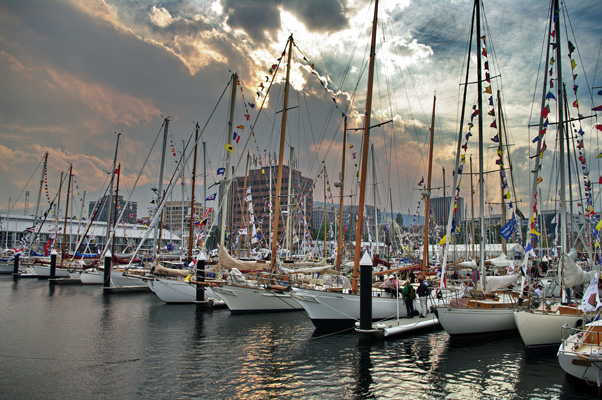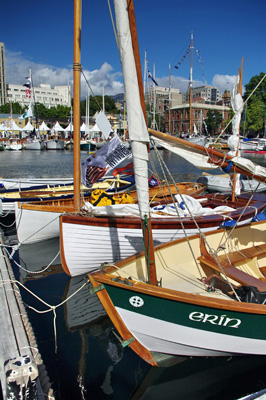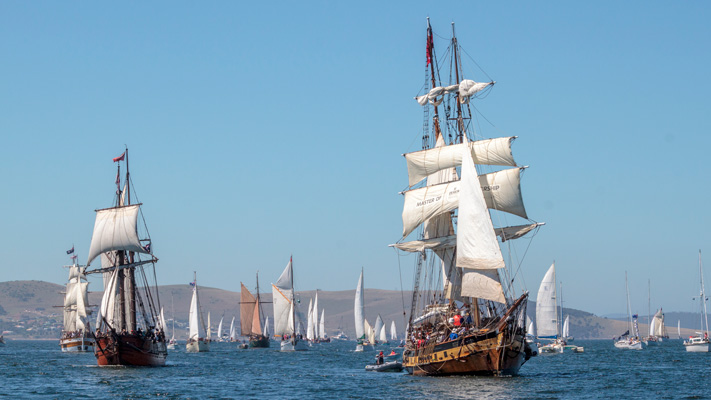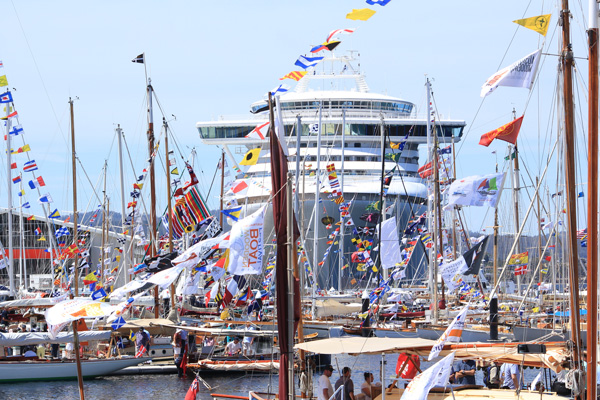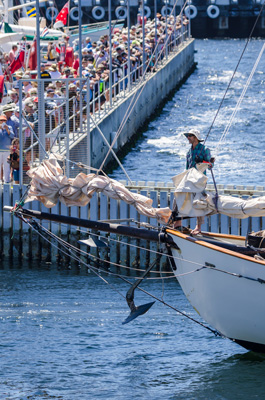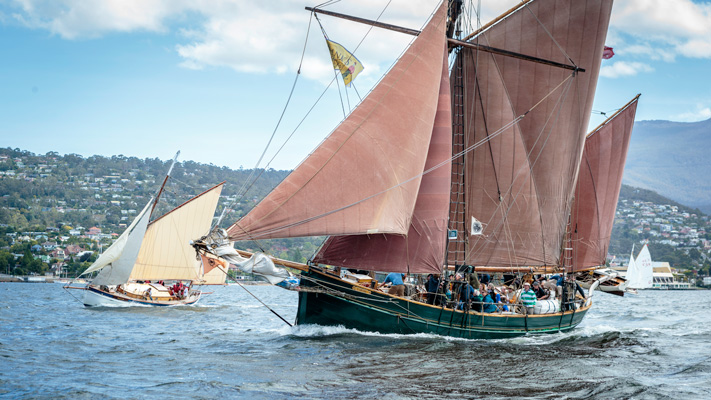
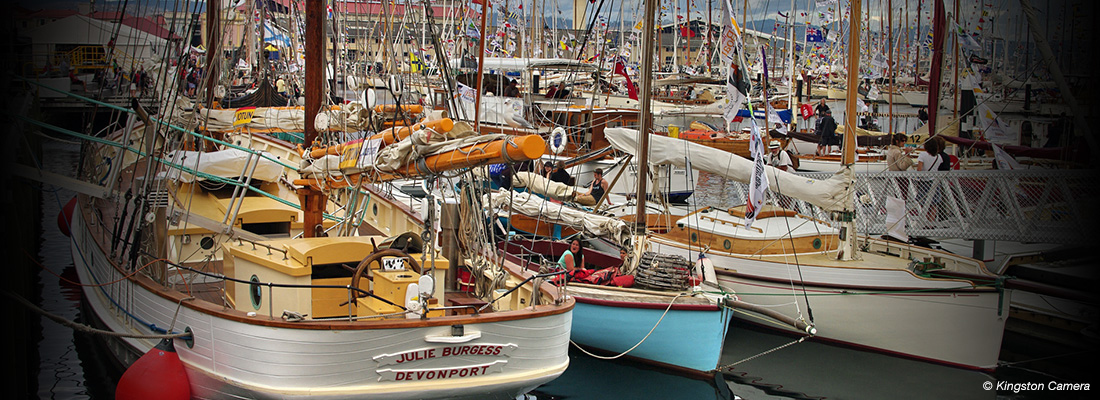
| PREVIOUS | HOME | NEXT |
Insurance law meets wooden boats Past AILA president outlines risk management requirements for massive festivalBy Kate Tilley*, Resolve Editor Insurance law took on a whole new perspective when former AILA president Steve Knight got involved in running the Australian Wooden Boat Festival. AWBF is a biennial four-day event on Hobart’s waterfront and Steve, chairman of the board at Tasmanian firm Dobson Mitchell & Allport, has chaired the AWBF board for five festivals and been vice-chairman or a board member for another three. He has just retired from the AILA board after almost 21 years. AWBF is all about boats, but not just boats. There are skill displays, commercial exhibitions, roving theatres and other entertainment, food and drink stalls, children’s activities, and more. The next festival is on 10-13 February 2017 and Steve says book early if you plan to attend – hotels and airline seats fill fast. This year’s event had an estimated 220,000+ attendees, of whom 40% were from outside Tasmania.
Steve told Resolve that, when he joined the AWBF board, he had to switch his traditional lawyer’s focus from representing insurers and insureds on indemnity issues and claims to “the other end” of the equation, assessing risks and legal responsibilities. It’s a big responsibility, particularly when you’re aware of the potential pitfalls. Steve worries that too many tourism ventures operate on “a wing and a prayer” and proprietors simply sign on the dotted line when documents are placed before them without considering whether they are properly insured. Steve outlined his experiences with insurance and legal issues in running AWBF at a special function in Hobart in November to celebrate 20 years since the launch of AILA’s Tasmanian branch. AWBF has been operating for 21 years and has grown into a massive event with a $1.2 million budget. It occupies almost the entire Port of Hobart, taking over roads and public spaces for the duration. In 2015, more than 550 wooden vessels were registered, including traditional tall ships, yachts, dinghies, fishing boats and steam-powered boats. All are wooden, with the square-rigged James Craig the only exception. Her hull is steel, but the decks are timber. Steve says her historical significance to Tasmania justifies her dispensation. Built in 1874, the ship lay derelict in Recherche Bay in southern Tasmania for years until she was restored over nearly 40 years at a cost of almost $30 million. Other steel-hulled—“Newcastle pine” in boatie parlance—tall ships have visited the festival over the years, AWBF is the southern hemisphere’s biggest wooden boat festival and globally one of the largest. Steve was “flattered” when a visiting US journalist described it as “the best in the world”. The festival is worth $80 million to the Tasmanian economy and many visitors stay on to travel the state. This year’s festival required 435 volunteers; 80 structures assembled onsite; 82 portable toilets; 10,000 rolls of toilet paper; 2,500 bottles of water for volunteers alone; and 40 litres of sunscreen. Among the myriad issues Steve, AWBF’s general manager Paul Cullen, and the other organisers had to consider were security and public safety. During construction there were forklifts, cranes and trucks on site and thousands of people wanting to take a look. “It was a logistical nightmare,” Steve told Resolve. “We had to deal with 19 separate government organisations, including police, the fire service, maritime regulators, Hobart City Council, environmental regulators, building surveyors, liquor licensing, the health department, even the Civil Aviation Safety Authority, because we had drones, helicopters and seaplanes involved,” he said. There was a wide range of landowners, each of which had different contractual requirements for AWBF to use their properties. Steve said many initially insisted on blanket indemnities. “There were torrid negotiations to remove them or reduce the scope to damage or injuries caused by our fault only,” he said. AWBF has a long-term relationship with broker Willis and was fortunate to have underwriters “willing to accommodate our needs”. During Steve’s time with AWBF, there have been only “a handful” of minor incidents and some medical emergencies on site. “We have been fortunate, but that’s due to a lot of effort in the planning stages and risk management,” he said. Before each festival, Steve spends about half a day evaluating and assessing potential risks with the broker and underwriters to then develop an adequate insurance program. Steve’s advice to other festival organisers is to “find a broker who understands your event. It’s not a common risk, you must talk to an appropriate underwriter; not everyone will take it on”. He advocates a team approach to what insurances are required, and assistance from third parties, for example, lawyers experienced in negotiating agreements for public events. But his key advice is “have fun”. Despite the exhaustion of running AWBF, Steve loves it. Every festival, he says “it’s a great feeling to stand back and say I’ve helped create this”. “It’s nice to put something back into the community.”
Steve’s from a nautical family. He’s the fourth generation Knight to skipper the gaff-rigged Huon pine yawl Gypsy. Built in 1914, Gypsy has been in the Knight family since 1918 and is still in original condition. (Click here to see a short film about Gypsy.) Every year Steve and the crew head off in Gypsy for a 10-day trip, “living off fish, sunshine and beer”. After that, getting back to reality is hard, but Steve is brimming with plans for forthcoming festivals, including extending events for another week in the D’Entrecasteaux Channel, which separates Bruny Island and mainland Tasmania, for boats that sail to Hobart for AWBF. In 2017, the tall ship Tenacious, operated by the UK-based Jubilee Sailing Trust is joining the festival. She is one of only two tall ships custom built to enable people with disabilities to sail and is believed to be the largest wooden vessel afloat in the world. Steve’s enthusiasm for AWBF is infectious – if he has his way, every plane to the island state will be full in February 2017 and the only way to get there will be under sail. *Resolve’s editor attended the 2015 AWBF and described it an “an awesome event”. She plans to be back in 2017. |
Resolve is the official publication of the Australian Insurance Law Association and
the New Zealand Insurance Law Association.


